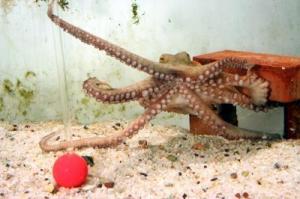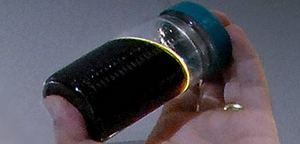Research on octopuses has shed new light on how our brains store and recall memory, says Dr. Benny Hochner of the Department of Neurobiology at the Alexander Silberman Institute of Life Sciences at the Hebrew University of Jerusalem.
Why octopuses?

|
| ©Hebrew University
|
| The octopus learns to avoid attacking a red ball because he gets a mild electric shock.
|
Octopuses and other related creatures, known as cephalopods, are considered to be the most intelligent invertebrates because they have relatively large brains and they can be trained for various learning and memory tasks, says Dr. Hochner.
Their behavior repertoire and learning and memory abilities are even comparable in their complexity to those of advanced vertebrates. However, they are still invertebrate mollusks with brains that contain a much fewer number of nerve cells and much simpler anatomical organization than that of vertebrate brains. This unique constellation was utilized to tackle one of the most interesting questions in modern neuroscience, which is how the brain stores and recalls memories.



Comment: Here's an idea: why not use this technology to stage a UFO invasion? At the right time, the powers that be could present the 'reality' of life beyond the stars to humanity and everyone would fall down and obey our new masters from outer space. Just a thought, keep it in mind. You never know.